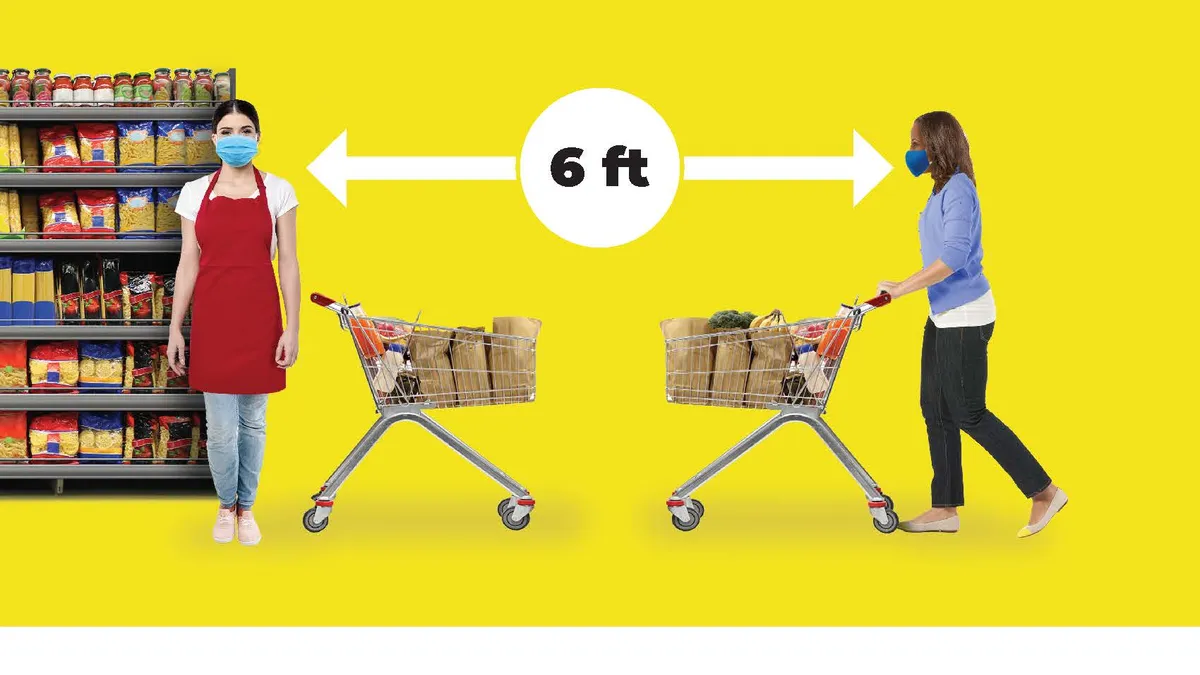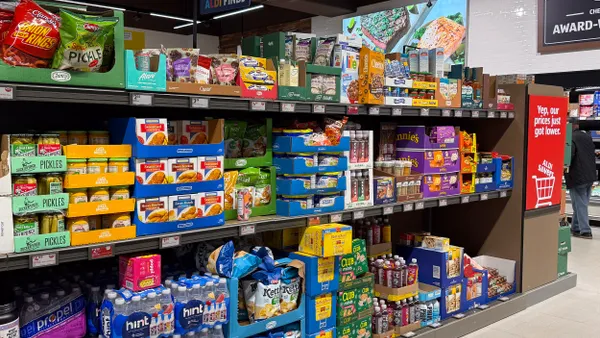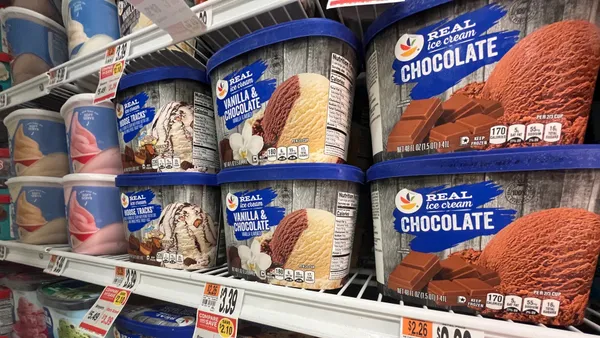Dive Brief:
- The most effective way to encourage people to maintain distance from one another while grocery shopping is to emphasize that doing so is their responsibility, according to a study conducted by the Behavioral Insights Team, which seeks to help governments, businesses and other organizations improve communities. Messages that focus on what someone should not do were found to be less credible, the researchers found.
- Working with the Portland, Oregon, Bureau of Emergency Management, the researchers surveyed about 4,200 adults from across the United States to test messages designed to keep people at least six feet apart while grocery shopping. The team found that posters that relied solely on images were as effective as signage that also used text to emphasize the importance of social distancing.
- The poster found to be most effective, which features an image of two shoppers with carts between them and the words, “It’s your duty to protect our staff and other shoppers,” is already in use by some stores and is available for any grocer to download at PublicAlerts.org, a regional website hosted by the emergency management agency. A simpler version with less text, along with other signage options, is also available on the site.
Dive Insight:
The Behavioral Insights team’s research shines a light on the challenge supermarkets face in trying to keep shoppers from getting too close to each other as stores remain open during the pandemic. Grocers jumped into action to try to keep the virus from spreading among shoppers and workers in their stores at the start of the pandemic, but they have found that many customers were unwilling to follow social distancing protocols. Many shoppers have turned to social media to vent their frustrations about the unwillingness of other grocery shoppers to keep their distance.
The fact that supermarkets are essential businesses means they play a key role in conveying to people the importance of taking actions that could help protect others during the pandemic. “Portland was particularly interested in people’s behavior in grocery stores because they were one of the few places that were still open,” Carolina Toth, behavioral insights expert and project lead for the Behavioral Insights Team, told Grocery Dive in an interview. “With all the people who are passing through, if you are able to influence the behavior just a little bit then that [can] make a big difference to public health outcomes.”
People may be less receptive to instructions during a time such as the pandemic. They may act based on what they feel driven to do, like getting what they need in the store quickly or making sure they snag a product they need that's in short supply.
“In a context where people are stressed out about a lot of stuff, they have limited mental bandwidth, and so you want to take up as little of that bandwidth as you can so that they actually take the time to understand what you're trying to tell them,” Toth explained.
Simple, targeted messaging that makes people feel empowered is central to getting people to do things that don’t come naturally to them, Toth added. “We tend to believe people who emphasize duty, responsibility and a higher calling more than we tend to believe people who say, ‘Think about all the harm you’re doing,’” she said.
Signage intended to direct shoppers to do things in grocery stores that they are unaccustomed to, like keeping distance or going down aisles in a single direction, should be placed right where they are expected to act. “You want to try to catch them at the moment that their habit is going to take them in the wrong direction," said Toth.
In addition, messages are likely to be more effective if they are cleanly designed and free of clutter, Toth said. “Don’t put the name of your grocery store or your slogan at the top,” and focus on what retailers specifically want shoppers to do, she noted.













